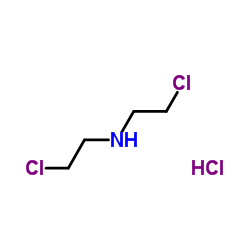Growth and cell survival following treatment with estramustine nor-nitrogen mustard, estradiol and testosterone of a human prostatic cancer cell line (DU 145).
B Hartley-Asp, P O Gunnarsson
Index: J. Urol. 127(4) , 818-22, (1982)
Full Text: HTML
Abstract
Estramustine at concentrations ranging from 3-40 x 10(-6) M inhibited the cell growth and clonogenic survival of a human prostatic carcinoma cell line (DU 145). This cell line was found to be unresponsive to estradiol and testosterone at concentrations ranging from 10(-9) M to 5 x 10(-5) M. Metabolism studies with estramustine showed that only a few per cent of the ester linkage was cleaved during the exposure period. This small amount of metabolism could possibly lead to the release of nor-nitrogen mustard, which was however found not to be as inhibitory as estramustine in this cell line. The results indicate that estramustine per se causes the cell death of hormone unresponsive human prostatic carcinoma cells in cell culture.
Related Compounds
| Structure | Name/CAS No. | Molecular Formula | Articles |
|---|---|---|---|
 |
Bis(2-Chloroethyl)amine hydrochloride
CAS:821-48-7 |
C4H10Cl3N |
|
Occupational exposure to nor-nitrogen mustard: chemical and ...
1995-01-01 [Toxicol. Ind. Health 11(1) , 89-97, (1995)] |
|
Basic principles in preclinical cancer chemotherapy.
1990-01-01 [J. Cancer Res. Clin. Oncol. 116(5) , 411-24, (1990)] |
|
Covalent binding of nitrogen mustards to the cysteine-34 res...
2002-03-01 [Arch. Toxicol. 76(2) , 83-8, (2002)] |
|
The determination of cyclophosphamide and its metabolites in...
1994-03-01 [Biol. Mass Spectrom. 23(3) , 149-58, (1994)] |
|
Oxazolidonylethyl adducts to hemoglobin and DNA following no...
1996-01-05 [Chem. Biol. Interact. 99(1-3) , 263-75, (1996)] |